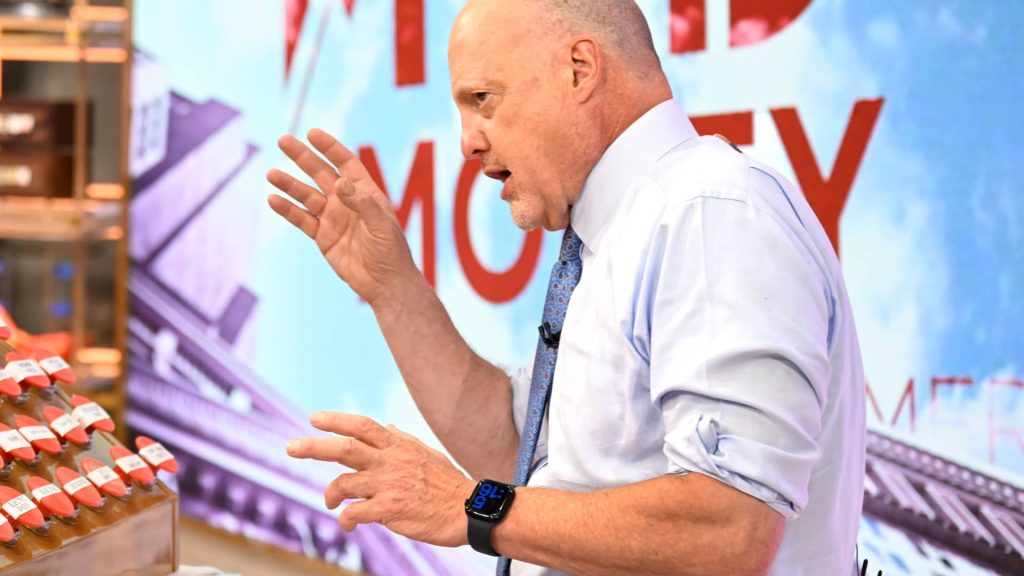Palo Alto Networks delivered a strong quarter, but the stock plummeted after-hours on a slight billings miss and a disappointing reduction in its full-year outlook due to a shift in strategy. Revenue during the cybersecurity company’s fiscal 2024 second quarter increased 19% year-over-year to $1.98 billion, beating the consensus estimate of $1.97 billion that was compiled by LSEG, formerly known as Refinitiv. Adjusted earnings per share grew 39% to $1.46, ahead of estimates of $1.30. But total billings increased about 16% year-over-year to $2.35 billion, missing estimates of $2.36 billion and toward the low end of management’s expected range of $2.34 billion to $2.39 billion. Bottom line These results were not as clear-cut of a buy-the-selloff opportunity as we called the previous quarter when the stock dropped to the $240s. But they were not a complete thesis changer either. While the quarter was mostly fine with a nice beat on margins and cash flow, the issue was with billings for the second quarter in a row. Last time, we heard the billings cut was due to the high cost of money, which pushed customers into lower duration contracts and led to more financing. This time, we heard about weakness from a particular vertical in the immediate term and a strategy shift in the short term. In the immediate term, management cited softness in the U.S. federal government market. The company said it has several large projects in the pipeline but did not close. This trend started toward the end of the company’s fiscal first quarter, worsened in the second quarter, and it’s expected to continue into the second half of the fiscal year. In the short term, CEO Nikesh Arora spent a lot of time on the call discussing the acceleration of his “platformization” and consolidation strategies. “Customers have adopted platforms in other markets across technology,” Arora explained, using Salesforce, ServiceNow, and Workday as examples. “This will inevitably happen in cybersecurity,” he added. “These industry trends set up conditions that favor leaders that can drive consolidation. We intend to answer this challenge.” Remember, the old way was that enterprises would shop around and pick single product vendors in an a la carte style. But the industry has changed in recent years because the old way was too inefficient. To drive better security outcomes and increase value, customers are consolidating their budgets around vendors that offer a broad set of solutions. Palo Alto Networks has been at the forefront of this trend because it’s the best-of-breed in 21 categories. However, there’s an upfront financial impact that comes with any transition. Essentially, a typical customer entering into a platformization transaction will not pay for technology for a period of time as the company demonstrates the benefits. As more platformization programs ramp over the next year, the company expects billings and revenue growth will be impacted for the next 12 to 18 months. It’s short-term pain as the company looks to crush the competition. Once customers move into a period with contracts that have a full billing and revenue contribution, the company’s top-line metrics will accelerate. Think of it a short-term dip due to investment that will lead to an acceleration that management believes will lead to higher growth rates for longer and stickier customer relationships that will push the business toward its goal of $15 billion in next-generation security in 2030. It’s hard to argue against what Arora is doing because he’s built this company into the leader it is today with the broadest set of solutions. We have little doubt he won’t succeed in the future. It makes complete sense for him to change the approach to accelerate the consolidation trend and weed out “rogue” competitors that have become too aggressive with discounting. “We’ve noticed that we have a higher win rate on platform deals, we have a higher win rate in consolidation plays as opposed to best-of-breed head-ons, which end up costing more time and energy,” Arora explained on the call. Arora doubled down in a “Mad Money” interview Tuesday evening with Jim Cramer: “There is no cybersecurity abyss. I think this is a reshaping of our demand curve so that we can grow faster in the longer term.” It’s important to take a step back and realize that the factors around guidance Tuesday evening have little to do with overall demand, which remains healthy in management’s words. Hard to argue against that. The threat environment has never been more challenging with bad actors becoming more sophisticated. Heightened geopolitical tensions has elevated the pace of attacks. The new Securities and Exchange Commission (SEC) rules surrounding the disclosure of cybersecurity incidents increased awareness of how devasting a breach can be. So where do we come away? Typically, you want to sell a stock when a company talks about embarking on an investment year or business model transition. These tend to be a drag on the numbers, leaving little room for positive revisions over the next couple of quarters. It also creates the possibility of execution risk as the business model changes go into effect That’s why the Palo Alto sellers were out in full force Tuesday evening, sending shares down 20% in after-hours trading. Effectively, it’s a giveback of most of the stock’s year-to-date gains. Shares more than doubled in 2023. PANW 1Y mountain Palo Alto Networks 1 year However, we’re not going to try to go in and out of Palo Alto. The platformization change creates some short-term pain, but if Arora is right in the shift – and we see no reason to doubt him – then it will lead to a faster growing company that can make a lot more money than we thought it could. That’s why we are viewing the post-earnings 20% selloff with an opportunistic lens and upgrading the stock back to our buy-equivalent 1 rating on this leader in a secular growing industry. “Sometimes you have to consolidate to go out and double from there. I’m not worried about the stock price,” Arora told Jim. “Let’s go back to the basics, our business is strong, demand is strong.” Guidance For its fiscal 2024 third quarter, the company expects: Total billings in the range of $2.3 billion and $2.35 billion, a big miss against estimates of $2.62 billion. Total revenue of $1.95 billion to $1.98 billion, missing estimates of about $2 billion. Non-GAAP earnings per share are expected in the range of $1.24 to $1.26, below estimates of $1.29 consensus estimate. For the full-year fiscal 2024, management expects: Total billings in the range of $10.1 billion to $10.2 billion, which is a cut from its prior guide of $10.7 billion to $10.8 billion and below consensus of $10.74 billion. This is the second quarter in a row that management reduced its billings outlook for the year. Total revenue of $7.95 billion to $8 billion, which is a slight cut from its prior outlook of $8.15 to $8.2 billion. The consensus was $8.19 billion. Non-GAAP earnings per share are expected in the range of $5.45 to $5.55, which is a slight bump from its prior guide of $5.40 to $5.53. But at its midpoint of $5.50, it was below the consensus of $5.52. Adjusted free cash flow margin of 38% to 39%, which is an improvement from prior guidance of 37% to 38%. (Jim Cramer’s Charitable Trust is long PANW. See here for a full list of the stocks.) As a subscriber to the CNBC Investing Club with Jim Cramer, you will receive a trade alert before Jim makes a trade. Jim waits 45 minutes after sending a trade alert before buying or selling a stock in his charitable trust’s portfolio. If Jim has talked about a stock on CNBC TV, he waits 72 hours after issuing the trade alert before executing the trade. THE ABOVE INVESTING CLUB INFORMATION IS SUBJECT TO OUR TERMS AND CONDITIONS AND PRIVACY POLICY , TOGETHER WITH OUR DISCLAIMER . NO FIDUCIARY OBLIGATION OR DUTY EXISTS, OR IS CREATED, BY VIRTUE OF YOUR RECEIPT OF ANY INFORMATION PROVIDED IN CONNECTION WITH THE INVESTING CLUB. NO SPECIFIC OUTCOME OR PROFIT IS GUARANTEED.
Palo Alto Networks delivered a strong quarter, but the stock plummeted after-hours on a slight billings miss and a disappointing reduction in its full-year outlook due to a shift in strategy.
Read the full article here
Post Views: 968







